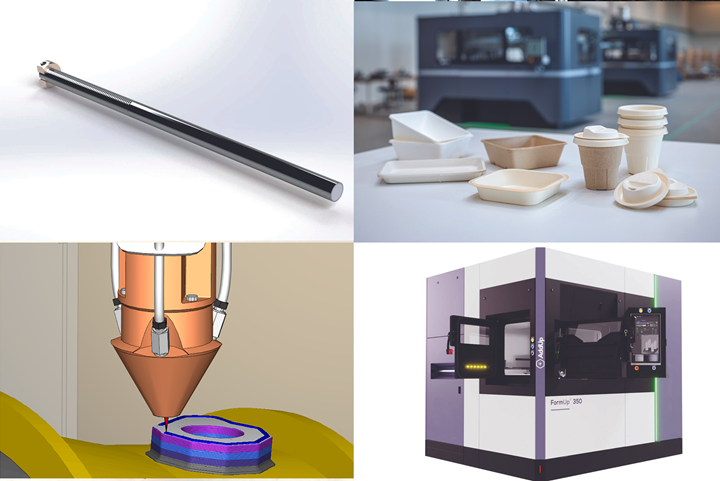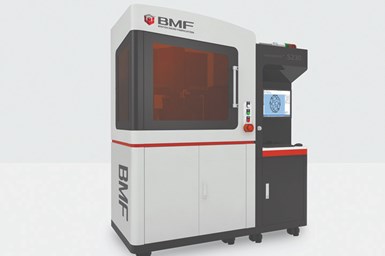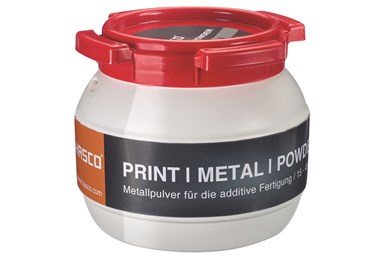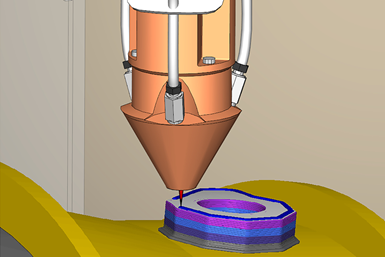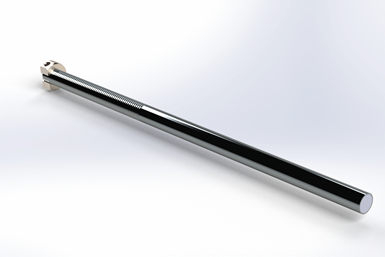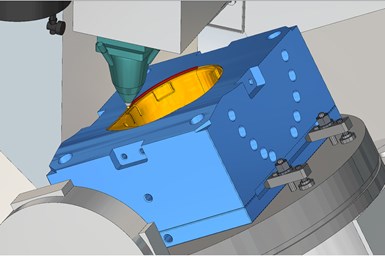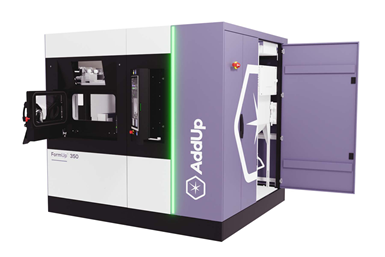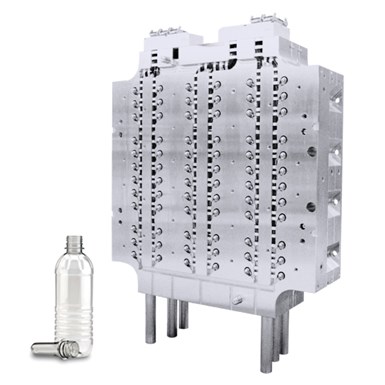Photo Credit: (top left) Next Chapter Manufacturing, (top right) ExOne Co., (bottom left) CGTech and (bottom right) AddUp Inc.
Additive manufacturing (AM) continues to build new opportunities for moldmakers, from saving on energy and material waste, decreasing cycle times, enhancing part reliability, eliminating design constraints and a host of other advantages.
This trend is also being observed in the new software, equipment and materials offered to the industry, which is exemplified below, as well as in MoldMaking Technology’s upcoming December 2021 print/digital issue.
See what you might have missed below!
For additional information covering this topic, including case studies, a directory to primary AM-related suppliers and MMT Chats focused on this topic, take a look at the “Read Next” section.
ExOne Co., a global provider of industrial sand and metal 3D printers using binder jetting technology, launches X1 Tooling, a broad portfolio of industrial-grade 3D printed tooling that includes new solutions for plastic injection molding or forming, laying up composites, casting metals and more.
The X1 Tooling line is designed to offer tooling options that speed up delivery times and bring tooling closer to the point of final production.
Photo Credit: Boston Micro Fabrication
Boston Micro Fabrication (BMF) recently launched the microArch S230, along with three new materials. This next-generation version of BMF’s highest resolution system is designed for applications that require ultra-high resolution prints (down to 2μm) with reported accuracy, precision and speed.
Photo Credit: Hasco America
Hasco America has developed a high-grade metal powder for additive manufacturing (AM), which is applied layer by layer, and then fused to the layers beneath via a laser for the development of a solid part. The new powder is identified by its high quality and optimized combination of particle size, roundness and homogeneity.
Photo Credit: Mantle Inc.
Mantle’s precision metal 3D printing technology produces precision tooling components—such as cavities, cores and sprue bushings—that reportedly reduce the time and cost of making production-grade tools, molds and dies. Mantle’s technology combines additive 3D printing of metal pastes with subtractive machining to meet the requirements of the tooling industry.
CGTech’s software, VERICUT, features an additive module that simulates both additive and traditional milling or turning capabilities of hybrid CNC machines. VERICUT’s simulation safeguards both the machine and the component from damage by detecting potential collisions, validating laser, material and gas usage, as well as identifying errors throughout the additive process
Photo Credit: Next Chapter Manufacturing
Next Chapter Manufacturing offers its Innovent technology in a standard component, the Innovent Pin, to eliminate the costly issue of gas traps in molds, which often lead to high scrap levels, cracking and weak parts. This design is made from 420 stainless steel to ensure no corrosion, produced via metal 3D printing and ground to exacting tolerances for a proper fit.
According to Next Chapter, its pins offer 10-15 times the volume of venting over traditional venting methods.
Photo Credit: Open Mind Technologies
Global CAD/CAM software solutions provider Open Mind Technologies offers an additive manufacturing capability option in its hyperMILL CAM software to support 3D printing/additive processes. This feature provides efficient hybrid processing with additive and subtractive processing, including material deposition, on one machine.
AddUp Inc. is a global metal additive manufacturing (AM) OEM, providing industrial-scale metal 3D printers. The company launched the FormUp 350 New Generation powder bed fusion (PBF) machine in 2021. This machine can reportedly create molds with increasingly complex geometries with internal passages that cannot be achieved with conventional manufacturing processes.
Miscellaneous
Photo Credit: Mold-Masters
Mold-Masters recently unveiled its PET-Series hot runner system which delivers consistent, high-performance processing capabilities for optimized preform quality. Like several of its other product offerings, Mold-Masters says the PET-Series focuses on increasing productivity, enhancing reliability and lowering part costs.
The PET-Series hot runner enables customers to fill thinner preforms (light weighting), to save resin as a result of HR balance and less variation in preform weight, reduction in cycle time due to faster fill time and a wider process window, along with a reduction of AA content.
Landscape Source: Mantle
RELATED CONTENT
-
Choosing the right material can greatly affect the profitability and cost of your application.
-
Here are techniques commonly used to combat chatter and guidelines to establish a foundation for optimizing the moldmaking process.
-
If you’ve been torn in the long-standing, unresolved debate over whether graphite or copper is a better EDM electrode material, here are some considerations identifying differences in cost, detail and performance to help you select the appropriate material for EDM applications.
